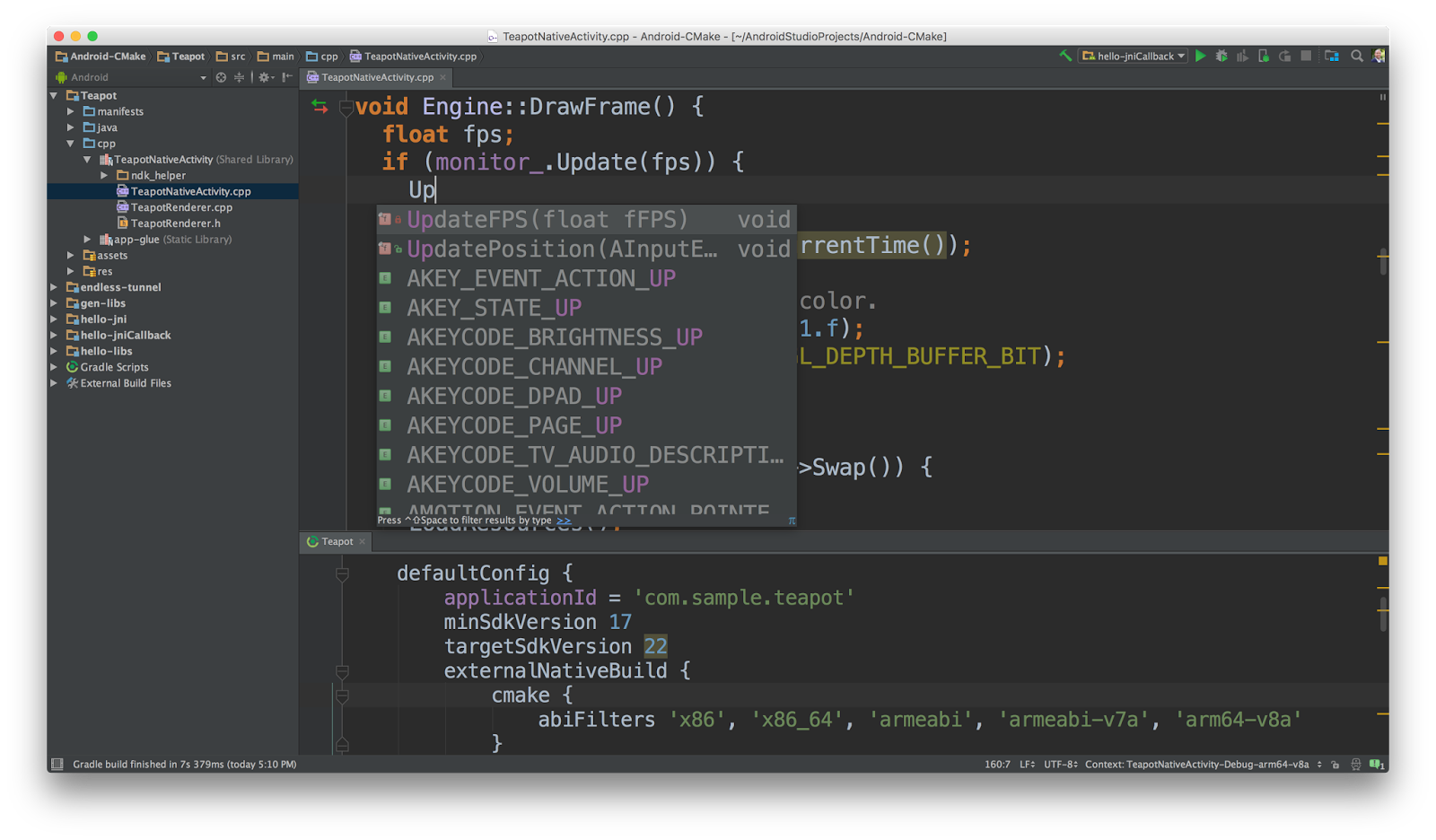
- #Android ndk sample code how to#
- #Android ndk sample code apk#
- #Android ndk sample code android#
- #Android ndk sample code code#
A simple bash script with Ant is enough to make it work!
#Android ndk sample code android#
HelloJni is the main Activity class name concatenated to the main package.īecause Android SDK, NDK, and their open source bricks are not bound to Eclipse or any specific IDE, creating an automated build chain or setting up a continuous integration server becomes possible. Command parameters passed in step 8 come from the Android manifest: is the package name and.
#Android ndk sample code code#
JNI is a standard framework that allows Java code to explicitly call native C/C++ code with a dedicated API.įinally, we have launched HelloJni on our device from an Android shell ( adb shell) with the am Activity Manager command. Both sides of the application, the native and the Java one, communicate through Java Native Interface. This library simply returns a character string to the Java part of the application on request. We have also compiled our first native C library (also called module) using the ndk-build command.

We have compiled, packaged, and deployed an official NDK sample application with Ant and SDK command-line tools.

Following is only a partial extract of the output: Among other things, Ant runs javac to compile Java code, AAPT to package the application with its resources, and finally ADB to deploy it on the development device. All these steps can be performed in one command, thanks to Ant build automation tool.
#Android ndk sample code apk#
#Android ndk sample code how to#
These files describe how to compile and package an Android application:

Indeed, that is a real strength Android is based on open source bricks which have matured for years. Depending on your background, some of these names may sound familiar to your ears. Eclipse, GCC, Ant, Bash, Shell, Linux-any new Android programmer needs to deal with this technologic ecosystem. (Discover the native side of Android and inject the power of C/C++ in your applications with this book and ebook)īy the end of this article, you should know how to start up a new Android native project on your own.Ī man with the most powerful tools in hand is unarmed without the knowledge of their usage.

Interface Java to C/C++ through Java Native Interfaces (in short JNI).Create our first own hybrid multi-language project using Eclipse.Discover additional tools like AM to manage activities and AAPT to package applications.Learn in more detail about ADB, the Android Debug Bridge, to control a development device.Compile and deploy official sample applications from the Android NDK with Ant build tool and native code compiler ndk-build.In this article by Sylvain Ratabouil, author of Android NDK Beginner’s Guide we are going to do the following:


 0 kommentar(er)
0 kommentar(er)
